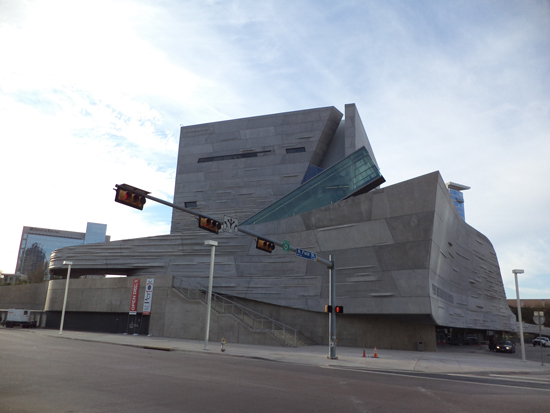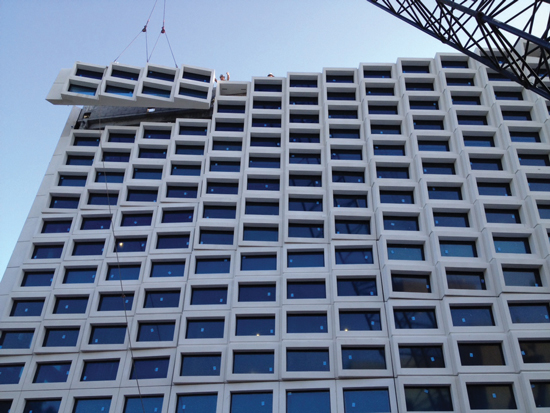High-Performance Aesthetics in Precast Concrete
More than just a pretty face, precast concrete supports innovation, sustainability, and performance
![]() Continuing Education
Continuing Education
Use the following learning objectives to focus your study while reading this month’s Continuing Education article.
Learning Objectives - After reading this article, you will be able to:
- Describe what high-performance aesthetics are.
- Explain the finish options with precast concrete.
- Explain how clay products and natural stones can be veneered to precast concrete to speed construction and reduce costs.
- Discuss the latest innovations in aesthetics and finishes, including thin brick and terracotta, and polishing and burnishing.
Concrete. A vital ingredient in the built environment that we encounter throughout our day. While concrete can be found occupying the role of unsung hero in essentially all structures, as a design medium, precast concrete truly embraces a diversity of color, forms, and textures, making it a high-performance material, especially in terms of both sustainability and aesthetics.
A high-performance structure is one that integrates and optimizes all relevant attributes on a life-cycle basis. This means that we are being challenged not to just build a structure that meets codes, but one that is the best structure it can be for the given location and circumstances relative to that particular project. Designers should look for ways to truly leverage the benefits of the materials and systems they use, which often go beyond the original intent for a material. For example, precast concrete can serve as the enclosure, providing the aesthetics and thermal, air, and moisture management systems, but also contribute to the structural system.
Precast Concrete Embodies the Definition of High-Performance Material
As a high-performance material, precast concrete contributes to the overall high-performance goals of a building. It provides energy and water conservation, safety, security, durability, and accessibility; and meets cost-benefit, productivity, functionality, and operational considerations. Yet, the term “high performance” challenges designers and owners to go beyond optimization. It embraces other key concepts, including the performance of the structure in the long-term and through life-cycle costs. Furthermore, it encompasses sustainable design and sustainability.
Precast concrete integrates and optimizes all major high-performance attributes on a life-cycle basis. It integrates easily with other systems, and inherently provides the versatility and efficiency needed to meet the multi-hazard requirements and long-term demands of high-performance structures.
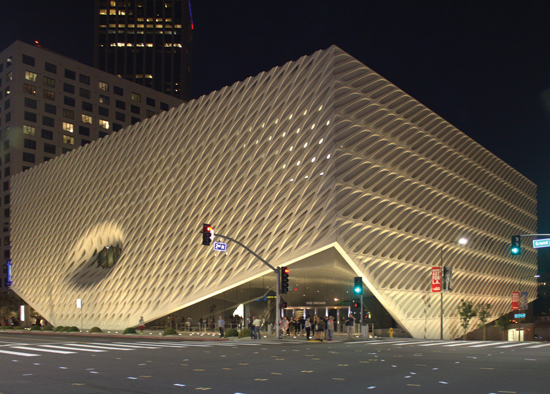
Photo courtesy of Willis Construction
The Broad Museum’s new wedding veil facade is comprised of more than 2,500 unique pieces of glass fiber reinforced concrete. This project showcases the aesthetic versatility, precision, forming, light, and sculpting ability of high-performance precast. The enclosure is designed to allow sunlight to enter the building, but without the light directly striking any of the art work inside.
Aesthetics Play Important Role in High Performance and Sustainability
In addition its high-performance attributes, precast allows designers to create a wide range of aesthetic effects and colors, to affordably incorporate historic elements, and to integrate a diverse array of facade elements into a single precast panel. Precast concrete facilitates a tremendous range of colors and textures through the use of formliners, raw materials (i.e. aggregates and cement), and pigmentation, as well as various finishing techniques, such as acid etching and abrasive blasting. Designers can create intricate bullnose detailing, reveals, and custom castings. Designers also can embed or veneer traditional materials, such as thin brick or stone, into precast panels to utilize their natural beauty while gaining the many high-performance benefits of precast concrete.
The aesthetic versatility of a material is important, because it allows us to be truly creative while still preserving efficiency. Not only does an aesthetically versatile material offer a broad design palette, but it should also minimize construction complexity, reduce life-cycle costs, be durable and have a long service life; and, contribute to the efficiency and resiliency of the structure.

Photo courtesy of High Concrete Group LLC.
Precast concrete was used as the enclosure system for this high-end, high-rise, residential building in Chicago. The architect made extensive use of detailed formwork to create extensive balconies, decorative features, detailed cornices, and more. A medium sand-blast finish was used with three different mix designs, resulting in different colors for each of the three towers.
Precast Concrete Sees the World in Full Color
Precast concrete comes in an almost endless array of colors. Color can be created by natural materials, such as aggregates like stone and sand, or via cements and colored pigments, or from a combination of both, depending on the finishes selected. To achieve optimum results, it is important to have a basic understanding of these ingredients, and to use high-quality, consistent materials and processes.
The color of concrete is composed of the paste (cement and water), matrix (paste and sand), and stone (coarse aggregate). Which components contribute most, or dominate, the color contribution depends on the finish selected and degree of exposure. The term “exposure” refers to the matrix and coarse aggregate.
To help differentiate the primary contributing material to color, we can place finishes into two basic groups. Both of these are different in terms of color, finish, reproducibility, and longevity. First is paste-dominant color, wherein the primary contributor to color is the paste. This color application is typically found in zero to light exposure finishes. Paste is made up of cement and water, which, when combined, create a chemical reaction called hydration. It should be noted that pigments that are used to sometimes tint the paste portion of the concrete are inert.
Aggregate-dominant color, where aggregate is the primary contributor to color, is typically seen in medium to deep exposure finishes. The term exposure refers to the degree to which the aggregate is part of the finish. “None” would denote a color that is paste only, or skin. Light exposures predominantly feature sand and paste. Medium exposures typically have half-and-half mix, where half of the visible concrete is aggregate. Heavy, or deep, exposures refer to coarse aggregate being mostly visible.
In form finishes and light exposures, most of the color is derived from the paste and matrix, whereas, with deeper exposures, the coarse aggregate becomes the primary contributor to color.
Paste is the binder in concrete, resulting from the mixing of the cement and water, and can be colored by a variety of pigments. During the chemical reaction of hydration, slight alterations in the variables can produce different results. For example, if more water is added to a concrete mix, typically a lighter color of paste will result. Furthermore, paste-dominant finishes may be more susceptible to color variation and changes in color over time, especially depending on the environment a project is located in.
When using paste, there are several important quality-assurance measures of which to be aware. Fluctuations in the water-to-cementitious ratio can result in panel-to-panel color variation. More curing will typically darken the final finish. High porosity can result in staining as well as absorb runoff water, so make sure the concrete has a low absorption rate. Paste-dominant color is also susceptible to weathering and acid rain, which may alter the color with time.
Aggregates Provide Great Color Stability. Aggregate-dominant color, the second major category of color, derives its hue from aggregate mixed into the concrete. Aggregate-dominant finishes may include coarse or fine aggregates, such as silica, limestone, granite, marbles, and quartz. Aggregate colors range from whites and pastels to red, black, and green. Natural gravels provide a wide range of rich, warm earth colors as well as shades of gray.
Color from aggregates is fairly consistent over time, and curing does not affect color. Typically, aggregate-color-dominant concrete is very durable and resistant to weathering and staining, depending on hardness. There is also less panel-to-panel variation if properly blended. Moisture does not alter the color of most aggregates. However, there are some design considerations when choosing an aggregate color. Soft aggregates, like silica, may wear over time. Round aggregates, like river gravel, have less bonding ability and less surface area, so they retain less dirt and pollution, and are more easily crafted to a consistent finish. Angular aggregate, like crushed granite, has more surface area, which allows for a better bond but more dirt retention. The irregular shape of this aggregate type makes it more difficult to develop a consistent profile between panels on returns.
Using the exceptional flexibility afforded by both paste- and aggregate-dominant color, architectural precast concrete can be cast in almost any color, form, or texture to meet the aesthetic and functional requirements of the designer in an economical manner. Complementary combinations of color and texture can aesthetically improve any project.
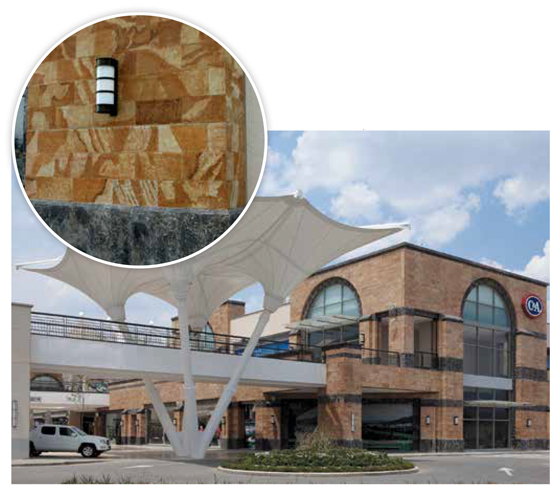
Photo courtesy of Karen Weber © FOTOSENCONCRETO.COM
This large outdoor mall in Mexico used a precast concrete enclosure system that combined pigments, formliners, acid etching, and chiseling techniques to emulate the black and orange natural stone. Precast concrete reduced the overall time and cost of the project relative to using the natural stone.
Texture Harnesses and Changes Surface Characteristics to Create Appeal
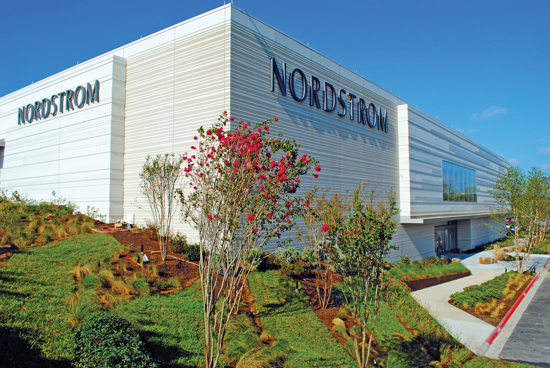
Photo courtesy of CallisonRTKL
Nordstrom is using precast concrete to create its new high-performance enclosure system that is being used in all of the stores around the country. The precast panels provide edge-to-edge, continuous insulation and serve as the air and vapor barrier, providing a very efficient enclosure system. Aesthetically, four different finishes are combined on one panel: sandblast, acid etch, polished, burnished, and the use of formliners to create horizontal bands at different widths and depths.
As-Cast
A smooth as-cast finish showcases the natural look of the concrete without trying to simulate any other building product. Fine surface details and sharp arrises can be achieved with a smooth finish. An as-cast, or form, finish requires no additional finishing after being removed from the form and is therefore one of the most economical finishes to produce. However, given the nature of a paste finish, panel-to-panel will mostly likely have less color uniformity and often a mottled look. There also is the potential for surface change when exposed to the weather. Smooth surfaces tend to weather unevenly and become discolored from rainwater and airborne particles. While a rough concrete surface will scatter reflected light and soften the impact of blemishes, a smooth surface will make variations more conspicuous.
Of all precast concrete finishes, this finish is the most misunderstood when it comes to acceptability. An acceptable smooth finish can be very difficult and expensive to achieve if the architect or owner anticipates a high degree of uniformity. However, if the surface is to be painted or stained, this finish will provide an excellent surface and keep costs to a minimum.
Many of the aesthetic limitations of smooth concrete can be minimized by the shadowing and depth provided by profiled surfaces, such as fluted, sculptured, or board finishes; by subdividing the panels into smaller surface areas, by means of vertical and horizontal reveals or rustications; or by using white cement. Any introduction of shapes to provide shadow effects will also enhance the final finish.
Abrasive Blast and Acid Etch
Both abrasive blast and acid etch methods provide exposure of the aggregate and matrix. Abrasive blasting typically mattes, or dulls, the color, while lightening the finish. This typically is good for color matching, hiding imperfections, and producing good weathering characteristics. Acid etch usually provides a light to medium exposure of the matrix (sand and paste). Typically, acid etching darkens the color and provides a sparkle, or sugar cube-type finish. This can be a good finish for acid-rain environments.
Overall, deeper exposures minimize panel-to-panel variations. The mixture proportions, aggregate gradation and physical characteristics of the aggregate and matrix/aggregate color compatibility are important. It is advisable to align the color, or tone, of the matrix wherever possible to match or blend with the color of the aggregate. This match can be achieved through careful selection of cement, sand, and pigment colors. A good matrix-to-coarse-aggregate color match will minimize noticeable mottled effects.
Acid etching is most commonly used for light to medium exposures and retention of detail. An acid-etched finish typically produces a fine sandy texture closely resembling natural stones, such as limestone or sandstone. It is often substituted for a light sandblast texturing. Aggregates on an acid-etched surface present a clean or bright look. However, after normal weathering, the aggregates lose their brightness and will closely resemble their original condition. Because of variations in surface color and texture possible over large fields, the panel surface should be broken with rustications or other details to minimize the visual effect of the variations.
A minimum depth of etch is required to obtain a uniform surface. This depth will expose sand and only the very tip of the coarse aggregate. Attempts to go any lighter than this often result in a blotchy panel finish. It is difficult to achieve a totally uniform light exposure on a highly sculptured panel. This is due to acid spray being deflected to other areas of the panel, particularly at inside corners. This may, however, be acceptable if the sculpturing creates differential shadowing.
Exposed Aggregate
If the bright, natural colors of the aggregate are the prime concern, exposed aggregate from retarded surfaces is the best way to achieve that result. Exposed aggregate uses a chemical surface retarder that is usually sprayed or rolled into the forms. This retards the set of the cement, which is then removed the next day, usually by water blasting. That results in exposing the aggregate without altering the aggregate.
This textural finish is typically used for medium to deep exposures, and is good for color matching, hiding imperfections, and offering excellent weathering characteristics.
While abrasive blasting (AB) creates a smoother texture and wears down the aggregate, typically frosting it, exposed aggregate (EA) via a retarder allows the aggregate to protrude and avoids wearing down the surface, thus maintaining color.
Polishing
Grinding and polishing can be used to mimic surfaces such as polished granite. While polishing can create a deeper exposure, its ultimate texture is flat, smooth, and higher gloss surface.
Typically, polishing is a more expensive and labor-intensive texture relative to other concrete finishes, but it is less expensive than using granite veneer.
Cast Stone
Cast stone is the method by which precast concrete can be used to simulate natural stones, such as limestone or sandstone. It can be wet cast or dry cast. Dry cast usually means the concrete mix is very granular, with a very low water-to-cement, or hydration, ratio. It is tamped into the forms. Normally, the dry cast method avoids air or bug holes at the surface.
Embedding Natural Materials into Precast Concrete
In addition to the full range of color and texture options, precast concrete can also be embedded, or veneered with, natural materials, such as clay thin brick, terra cotta or granite.
Embedded Thin Brick
When thin brick is used, clay or concrete bricks with a minimal thickness (typically around 1/2- to 5/8-inch thick) are set into forms and cast into the precast concrete. Embedded brick precast comes in almost all the shapes, colors, and sizes as field-laid brick and can be formed into any pattern, such as running bond or stack bond. Traditional brick wall details also can be included, such as soldier course and headers.
Embedding thin brick provides all the scaling and beauty of natural materials but with the speed, durability, and other high-performance benefits of precast.
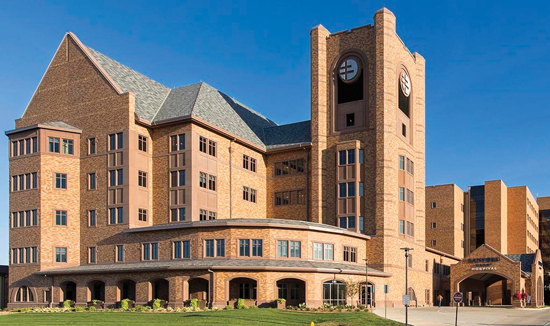
Photo courtesy of Gage Brothers
The Sanford Heart Hospital uses precast concrete panels embedded with thin brick to create a very detailed, yet traditional facade. Precast panels include arches and many unique pieces along with integration of exposed precast concrete sills, trim, and banding.
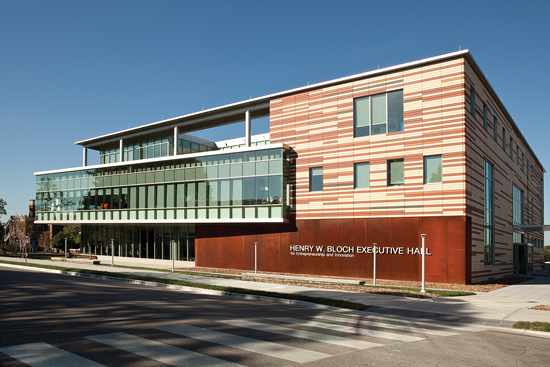
Photo courtesy of Jacia Phillips Photography.
This high-performance, precast concrete enclosure at the Bloch School, University of Missouri, uses embedded terra cotta on precast panels with 4” of continuous insulation (edge-to-edge) to provide a very efficient high-performance enclosure system.
Veneered Materials: Stone, Granite, Glass
Natural stone, veneer-faced precast concrete has become widely used in building construction because of its strength, durability, aesthetic effect, availability, and inherent low maintenance costs. Many natural materials can be veneered onto precast, like limestone or granite. However, unlike clay products, these materials usually are veneered via some form of pin connectors and use a bond breaker. Typically, these also use larger pieces of stone.
Benefits of veneers are numerous. Veneering natural stone into precast transfers the loads to the precast bearing points, making it easier to handle the loading. It allows for multi-plane, curves, or difficult shapes to be constructed easily. Using veneers also means capturing timesaving; several pieces are erected at one time, since they are integrated into larger precast panels. On-site, no storage or staging is required, and there is no need for scaffolds. Instead of requiring several subcontractors to set stone, you have one precaster, who also performs the erection. Furthermore, veneers are durable; this strategy reduces the number of joints and connections that need to be maintained.
Using veneers also reduces the overall amount of natural material needed, meaning less weight, and less fuel and cost to transport. A comparative analysis was performed on a dormitory project in Florida comparing thin brick to field-laid brick. Over a 100,000-square-foot area, using thin brick saved 1,150 tons of raw materials, 12,600 gallons of diesel fuel, and almost $70,000 from the cost.
For quality assurance when working with natural materials, color control or blending for uniformity should take place at the stone fabricator’s plant because ranges of color and shade, finishes, and markings such as veining, seams, and inclusions are easily seen during the finishing stages. Acceptable stone color should be judged for an entire building elevation rather than for individual panels. The responsibility for stone coordination should be written into the specifications so it can be priced. The owner, architect, and stone purchaser should visit the stone fabricator’s plant to view the stone veneer, and establish criteria and methods for color-range blending on the project.
Forms and Liners Used to Create Shapes, Macroscopic Designs, Patterns, and More
Concrete’s plasticity offers opportunity for innovation and individual character in surface textures, patterns, and shapes, all of which can be achieved by casting against the various types of formliners. A large pattern offers ever-changing details due to the play of light and shadow. A fine texture offers a muted appearance that is subtle but not drab. Smooth surfaces bring out the elegance and richness of simplicity. Formliner textured surfaces also mask minor imperfections that otherwise would be obvious in a smooth as-cast surface, yielding a more uniform appearance. Light and shade created by modeling or sculpturing with liners may be used for visual effect to enliven large concrete surfaces with low relief patterns. The options for combination finishes, involving one or more basic finishing methods together with formliners, are almost infinite.
Innovative patterns and designs can now be achieved by utilizing a combination of CAD and Computer Numerical Control (CNC) machining to produce custom formliners. CNC integrates computers into component manufacture, allowing for intricate pattern and form creation.
An important consideration lies in selecting the texture and/or type of formliner best suited to the project. If there are large wall expanses, a texture-like fractured fin with greater depth may give a more noticeable appearance with deeper shadowing. Shallow flutes, bushhammered, or subtle textures are often better for relatively small areas. When shallow patterns are used over large areas, subtle imperfections in the liner can give a mottled effect to the finished panel. Precast concrete can be produced with vertical ribs or striations in a range of sizes to suit a particular structure and the distance from which it will most often be seen.
Using Formwork Means Gaining Great Versatility in Forming and Details
A reveal or demarcation feature is a groove or step in a panel face, and generally is used either to create a desired architectural effect or to separate finishes or concrete mixtures. Another name for this is rustication or false joint. Reveals can be vertical, horizontal, diagonal, or curved forms, as well as any combination of these, and there may be several bands of them on a building. A superb example of this technique is the Nordstrom facade case study. Reveals can be narrow and delicate or deep, wide, and bold; they can offer a rectangular profile or take on any sectional shape desired, such as concave or triangular.
Reveals can be much more than a joint or line of demarcation between textures or finishes. Designing reveals in varying shapes, sizes, and depths for a precast concrete wall can transform what initially might be considered a mundane, solid surface into a rich play of shade and shadow, bringing visual interest to the building’s facade. Used effectively to create shadow lines, reveals offer the simplest way to reduce or change the building’s apparent visual scale, and to minimize any differences that may occur in texture or coloration between panels.
Reveals typically are designed where there are changes in the precast concrete’s surface. They allow a crisp, clean transition between different textures, finishes, colors, or profiles within a panel. For example, a shift in the panel’s finish from smooth to textured can be emphasized using a reveal at the point where the surface texture changes. Reveals also work well where fundamental materials change within a precast concrete panel, such as from an exposed aggregate finish to a non-exposed aggregate finish.
Architectural precast concrete provides the designer with virtually complete sculptural freedom and flexibility in shaping concrete into an articulated structure.
Concrete shapes are not limited to volumes enclosed within planer surfaces; they may also be radiused or rounded. Sculptured panels can produce building facades with distinctive, strongly modeled elevations having flat interior wall surfaces. High and low relief, straight-line geometric patterns, and practically any free-form shapes are possible. Returns are another component of form aesthetics, wherein rounded or spherical aggregates or light exposure may be created.
Precast Offers Ability to Integrate Enclosure Elements in Off-Site Prefabrication Process
While precast can combine several finishes into one panel, which reduces the need for frequent expansion joints and slip joints to account for differential movement, as well as flashing and other moisture management components, precast concrete can also integrate other materials and systems into it. Precast also affords the opportunity for enclosure integration. Examples include insulation, windows, duct work, electrical, etc. When these types of components are installed at the precast manufacturers facility, it saves time and money while improving safety and quality.
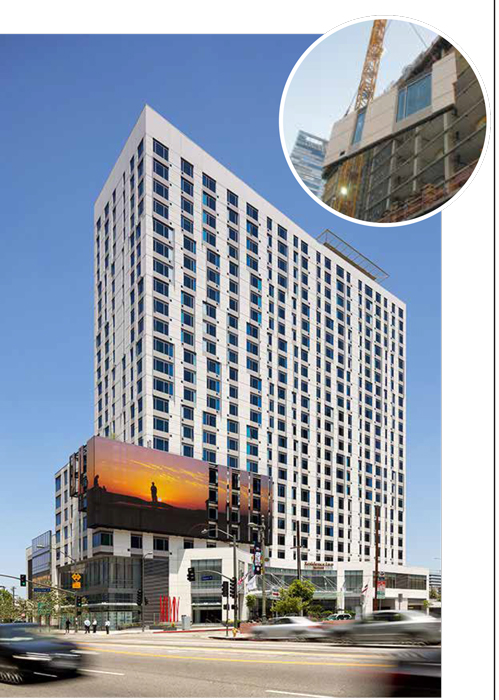
Photo courtesy of © JOSH PARTEE 2014
This project takes system integration and prefabrication to a new level. Precast concrete panels included insulation, pre-glazed punched windows, block outs for louvers, LED lighting conduits, light strips, and plenum boxes - all installed at the precast manufacturing facility and then shipped the project site. The 500 precast concrete panels, with light and medium sand blast finishes, were installed in about 5 months.
Precast Concrete Does More than Look Pretty
Precast concrete panels offer an unlimited vocabulary for design concepts to be executed in a broad range of architectural styles, shapes, and sizes. The material provides limitless potential for developing and manipulating mass, color, form, texture, and using detail to obtain simple, clean shapes yielding an interesting play of light and shadow.
Harnessing and understanding the aesthetic versatility of a sustainable material is important because it grants to the designer both performance and an expansive design palette. Not only does an aesthetically versatile material offer a deep design palette, but it should also minimize construction complexity, reduce life-cycle costs, be durable, and have a long service life; and, contribute to the efficiency and resiliency of the structure.
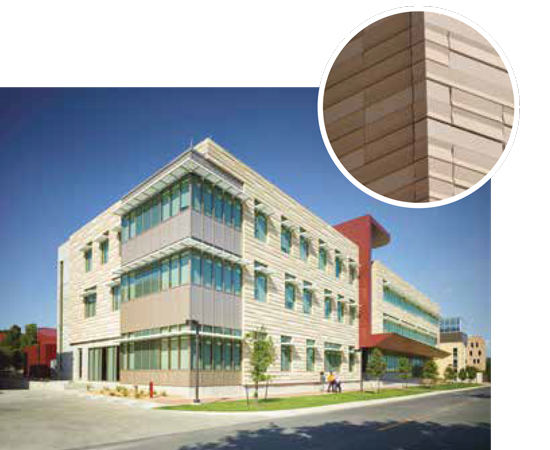
Photo courtesy of Moore Ruble Yudell; inset photo courtesy of Gate Precast Company
The precast concrete panels use formliners, with sandblasting and acid-etching to create a façade that looks like a rainscreen system, however it is a face-sealed or rain-barrier system.
Understanding the range of precast allows for a full picture of design possibilities. Proper selection of color, form, and texture for a building’s precast concrete exterior is critical in creating a successful aesthetic appearance. The decisions depend not only on cost, delivery schedule, and client preferences, but also on the local and regional context. Desired colors and textures can be achieved by varying aggregate selection, matrix color, size of aggregates, finishing processes, and depth of exposure of the aggregate. This textural flexibility allows designers to use combinations of different finishes within a single precast concrete unit using the same or different concrete mixtures.
Multiple finishing techniques, or concrete mixtures with differently colored matrices exposed at the face of the same panel offer an economical yet effective way to heighten aesthetic interest through the use of tone and texture in facade treatments. The use of multiple finishes demands that the designer make an early decision to ensure that the overall concept allows for transitions in finish color and texture. A suitable rustication or demarcation needs to be detailed to separate the different colors and/or finishes.
Achievement of a wide variety of design objectives is possible through the choice of appropriate aggregates and textures in combination with well-conceived production and erection details. The precast concrete unit’s finish should be considered before its shape is finalized.
It is recommended that the architect contact local PCI-Certified architectural precast concrete producers during the early stages of design and throughout the development of the contract documents. This will help optimize the design resulting the highest level of quality, while minimizing construction time and cost.
Precast concrete is a high-performance material whose initial plasticity is incredibly responsive to the designer’s creative needs. Manufactured off-site under factory-controlled conditions ensures a uniform, high-quality building facade in the desired shapes, colors, and textures. For the owner and tenant, precast concrete provides the long-term durability, fire resistance, sound attenuation, energy efficiency, and general life-safety attributes that are inherent in the material. For the observer, a well-designed precast concrete structure can match the mood of its surroundings or create an exciting counterpoint of visual excitement.
Amanda Voss, MPP, is an author, editor, and policy analyst based in Colorado. She serves as the managing editor for Energy Design Update, has taught multiple live AIA CEU classes, and served on the board of Energy Literacy Advocates. She has a background in public policy, residential construction, and custom building.
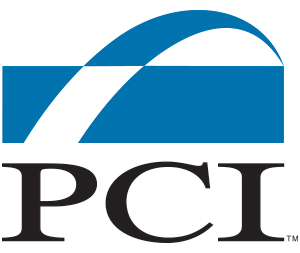
|
PCI |

